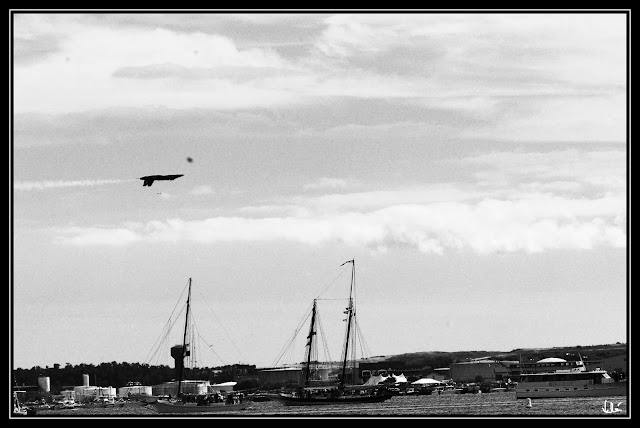I was looking out of my window which faces a
mountain chain in Prescott. The crown jewel of that chain is Granite Mountain
which is 2,325 km in altitude. Sunsets are very colourful behind that mountain
chain but sometimes sunrises are too.
On this morning, there was a large cloud upon the
mountain. Actually it looked like a soft cover or a hat. I grabbed my camera,
put the old Nikkor –P 180mm tele-lens on it and clicked.
A second or so later
the shape of the cloud changed. And a few minutes later it was gone.
It is all about timing. Interestingly, over the
years photography has also taught me to follow that undeniable paradigm by
making the most of any moment in my life. I know that, like that cloud, if not
capture to the fullest at that moment, it will pass and never be the same.
But one has to also be patient to “click”, on a
shutter or emotionally, when the moment is just right. Not only right. For
example, I often take photos of wildlife in our backyard. I have not been able
to capture the mountain lion (cougar) on film yet, but deer are much more curious
and friendly. So, there were two fawns looking for food. I knew I had one
chance to click as the sound of a 1969 Nikon’s slapping curtain scares them. So
I waited. At some point I anticipated the positioning between the two fawns
hoping to have a visual illusion.
Here is that illusion:
So, after printing the Granite mountain shots, I
thought of hats. I suppose that is the first thing that comes to mind,
especially when the hat is tilted to show mood or attitude. And I thought of a
few hat shots I had taken.
This is a traditional head cover. A lot of
history there and no real attitude. It belongs to a time, and a place, that we
still see around the globe.
This one has an attitude. It is also
traditional to the South and South West of the US. Yet, I felt that this
artist, while carving a horse out of wood, wanted to isolate himself from the
surroundings. So it is an attitude of shielding.
Well, this one has nothing to do with the hat
but the posture of the artist. In the viewer of my camera I saw a bull charging
this woman. The hat is really secondary here.
In this case, that hat is a sign of
importance and rank. Nothing to do with covering your head or protecting it.
The contrast in rank with the men surrounding this sword-carrying leader is
what I wanted to get. Although, when I looked at the printed photo, I realized
that he may not be a very expert in holding a sword while putting it back in the
scabbard. I doubt it that one should hold it by the blade!
This woman and her hat were in perfect upright
posture. But I took this photo because of the street lamp – I am not sure they
are supposed to be bent like that…
I like the harmony of this photo. In my mind
that is the perfect head cover shape that man could have warn. A cowboy hat
would have just destroyed the flow of the lines!
Finally, there is this photo. Everything in this
man’s posture and surrounding is unassuming. But it is his candor, written on
the cardboard he is holding that tells you his attitude.
Sometimes, a hat is much more than a cover.
December 23, 2017
© Vahé A. Kazandjian, 2017














































